
NOW AVAILABLE! Coding and Computational Thinking with a Virtual Robot
By Jesse Flot
Here at the Carnegie Mellon Robotics Academy, our mission is to use the educational affordances of robotics to create CS-STEM opportunities for all learners. But what happens when the robots themselves are not attainable?
Driven by these challenges, our dedicated team first started to research and develop virtual robotic solutions for education all the way back in 2010. We built and tested robot virtual worlds that helped teach programming more efficiently, and that helped students reach learning gains in computational thinking and even proportional math. And now, driven by the new set of challenges brought on by COVID-19 (social distancing measures, supply chain issues, increases in cost, loss of funds) our team has been continuing this work through a new generation of Virtual Robot Curriculum. We're very proud of the impact of this work, including tackling learning loss due to the pandemic in collaboration with FIRST Canada. With our new generation of Virtual Robot Curriculum, we first added support for the LEGO EV3 and LEGO SPIKE Prime robotics platforms, supporting educators who use these best-in-class robotics kits to help overcome some of the aforementioned challenges.
Today, I am very pleased to share that we are releasing another Virtual Robot Curriculum solution with a goal of supporting so many other robotics classrooms and clubs: Coding and Computational Thinking with a Virtual Robot.

Coding and Computational Thinking with a Virtual Robot features a brand-new bot designed by our team, lovingly dubbed "VICE" (short for Virtual-Integrated Curriculum Environment). VICE packs a wide variety of sensors (touch, color, distance, gyro) to detect its environment, outputs (pixel display, speaker, LCD, LED) to communicate with you, and motors (drivetrain, arm, claw) to navigate its environment and manipulate objects. Robotics educators that use robotics kits with similar features and form factors (VEX, Arduino, Cozmo, Vector, and many others) will find productive overlap in the programming concepts the physical and virtual robots can be used to teach; in fact, Coding and Computational Thinking with a Virtual Robot follows a very similar scope and sequence to Coding and Coding and Computational Thinking with VEX IQ, creating an almost seamless integration of both in a given classroom. For a full rundown of all of VICE's capabilities check out the (really cool) slideshow at the bottom of this post. (My personal favorite feature is its color changing ability - you can customize its color by clicking on it in the virtual environment!)
As students work through the curriculum, they will have many opportunities to both follow along and remix their programming with the help of VICE. Here's a quick demo of launching the Ice Sample Collection challenge and running code on VICE:
Our team collaborated with a group of dedicated educators who tested and provided feedback on this new curriculum to make sure that the curriculum met their needs. The full curriculum includes 9 units that cover Getting Started, Programming the Brain, Robot Movement, Digital Sensors, Analog Sensors, Loops, Discreet Decisions, Continuous Decisions, and a Capstone Challenge.
You can take a look at a preview of the curriculum here!
Like our other Virtual Robot Curriculum, Coding and Computational Thinking with a Virtual Robot features a programming interface and virtual robot embedded directly within the curriculum. Teachers and students can follow along with the included videos, animations, challenges, and step-by-step lessons using a fully virtual solution that are provided just-in-time. Students and teachers can learn anytime and anywhere, even without physical robot kits or programming software installed on their computers. The CS-STEM Network (CS2N.org) saves all student progress, including their programs for the virtual robot.
It is our sincere hope that this new Virtual Robot Curriculum continues the legacy of supporting robotics classrooms and helps educators overcome obstacles while students reach real and meaningful learning outcomes. We would love to hear what you have to say! Please share your throughts and feedback with us at cmra@nrec.ri.cmu.edu.
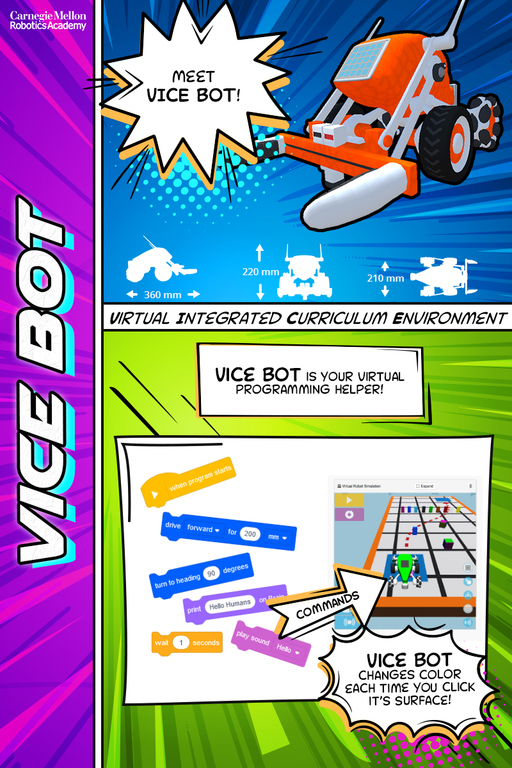
The Virtual VICE Robot allows students to complete all programming challenges in the Coding and Computational Thinking curriculum.
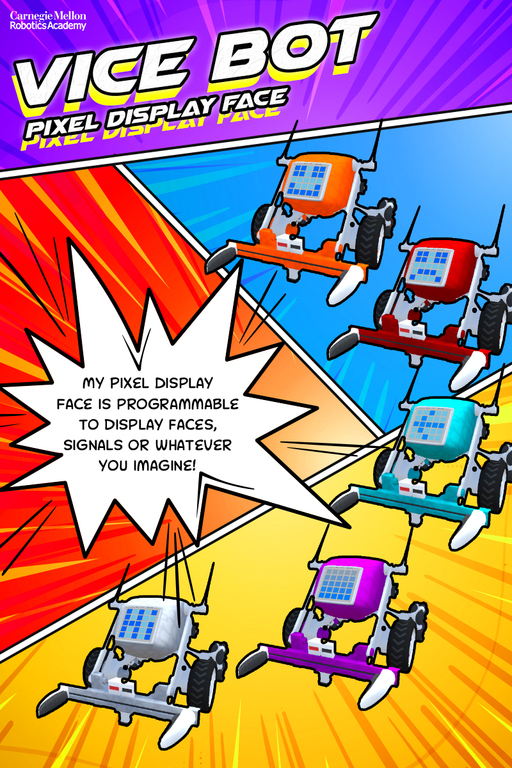
The Pixel Display on VICE allows students to output shapes, text, and emotions on the bot.
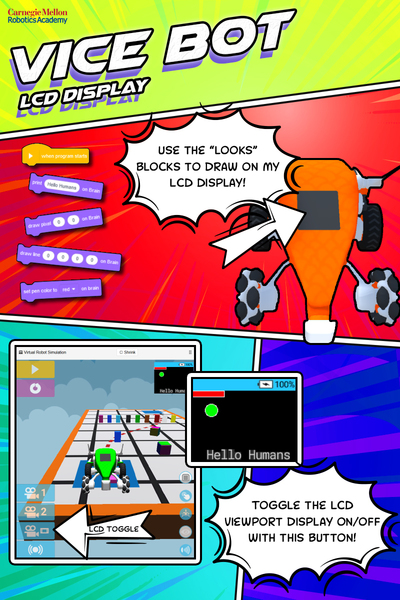
The LCD can be used to output more detailed information such as sensor readings or specific debug messages.
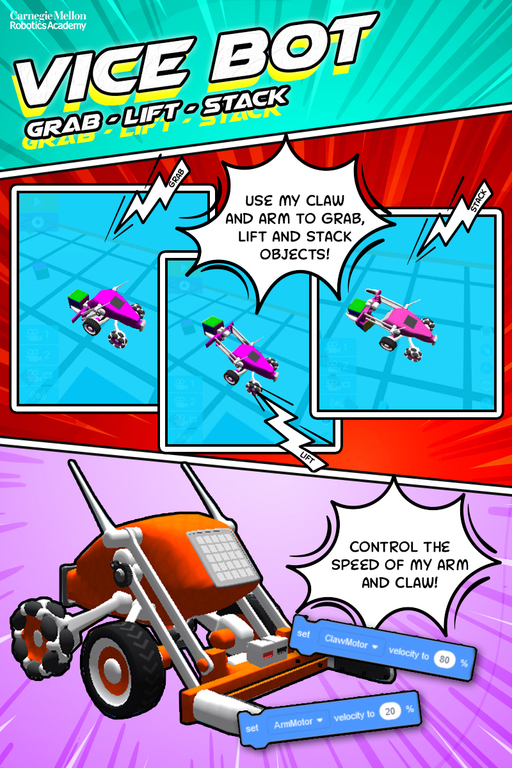
VICE is very capable of interacting with its environment, featuring a powerful arm and vice-like claw.
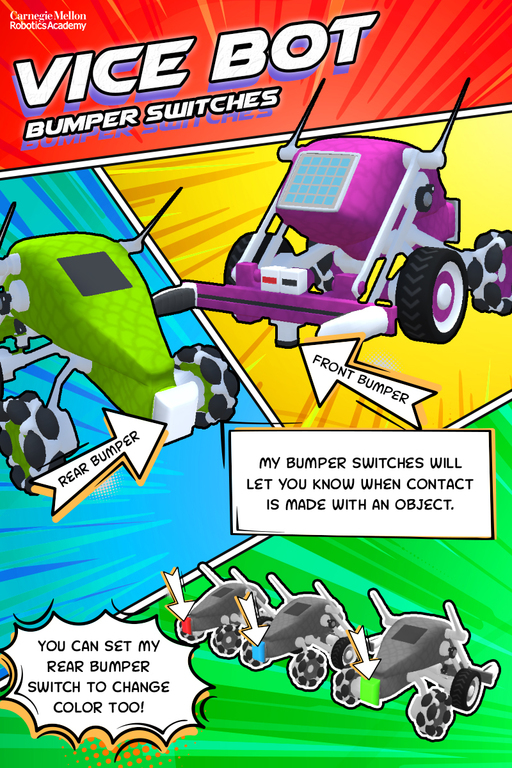
VICE can detect physical contact with its environment and output a variety of colors on its rear bumper.
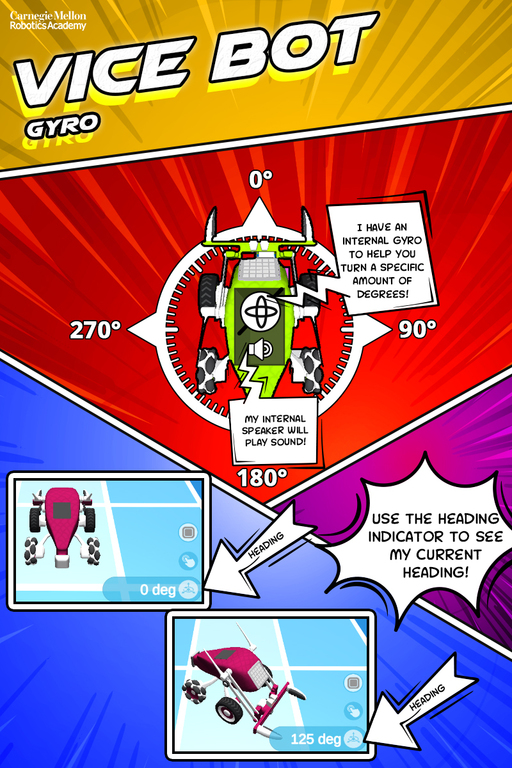
VICE always knows its rotation thanks to a built-in gyroscope.
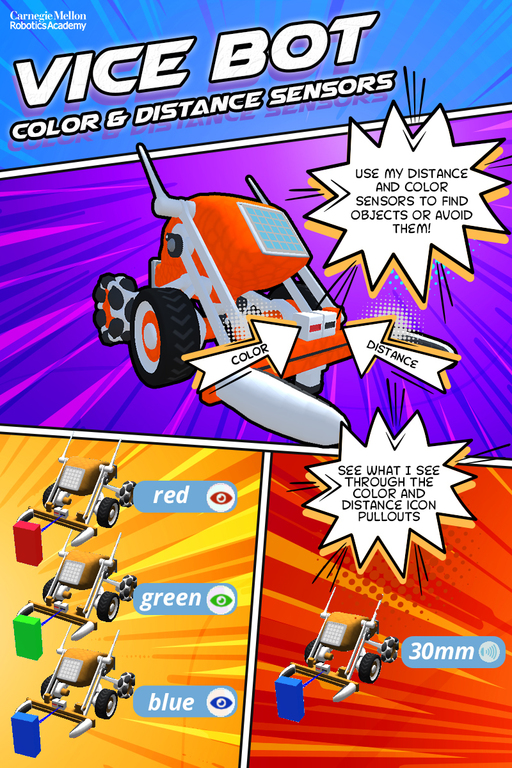
VICE can also determine the color of nearby objects, as well as the distance between it an objects using its sensor array.